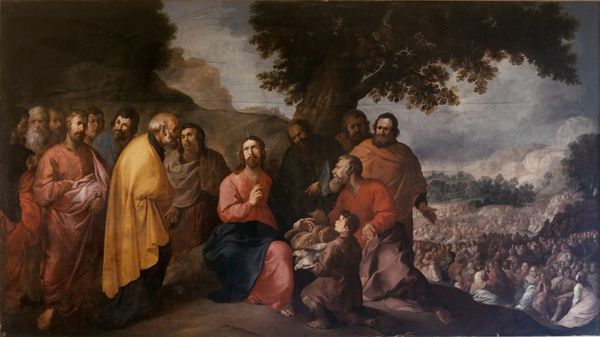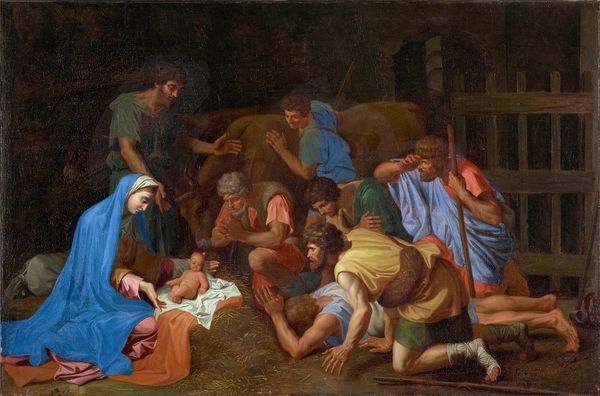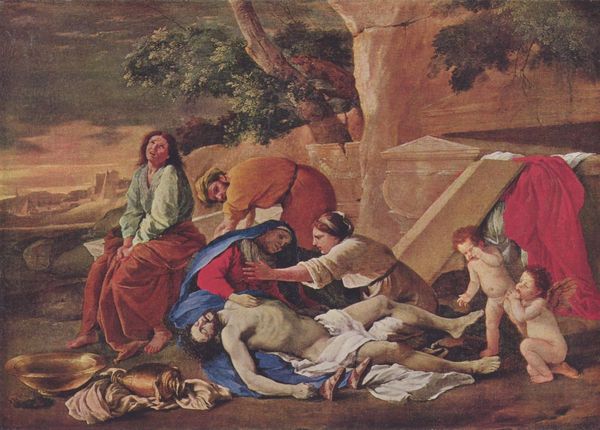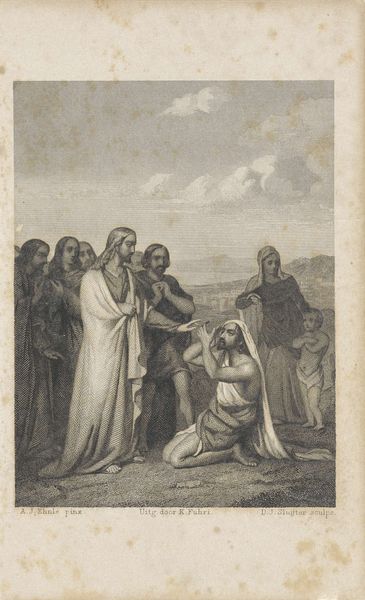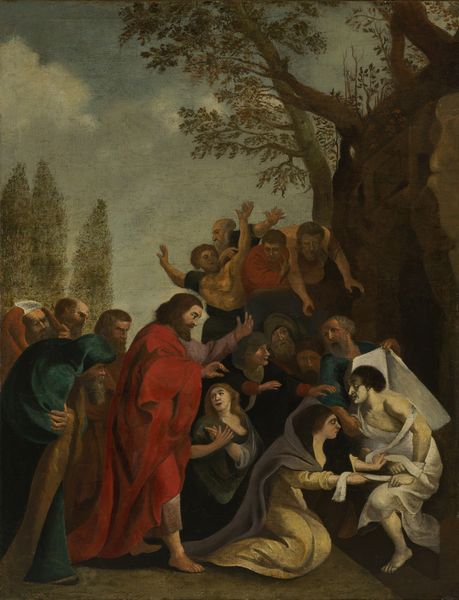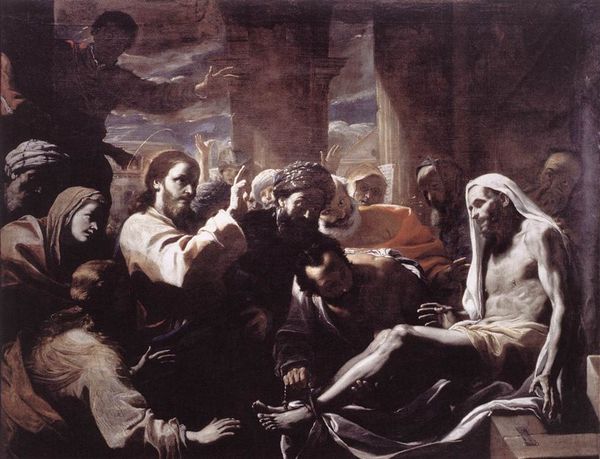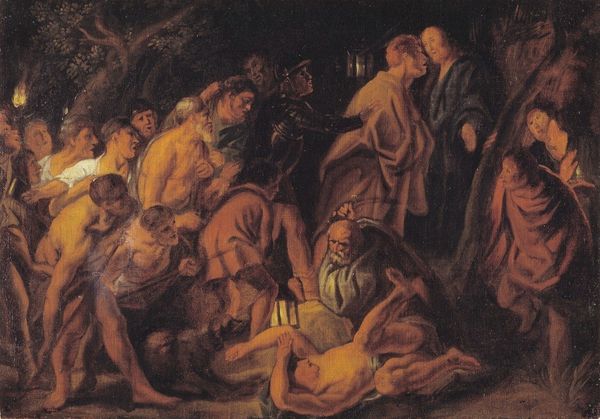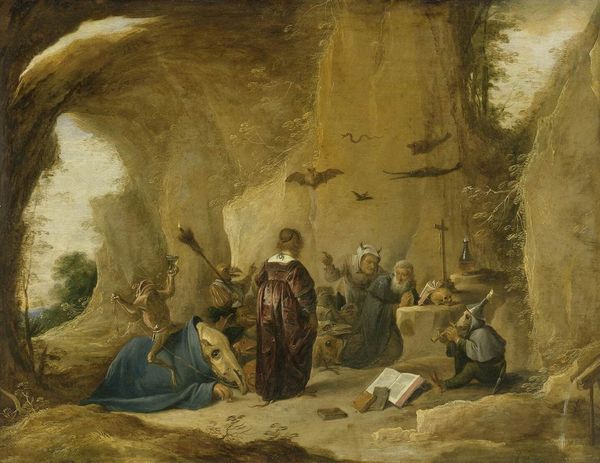
Dimensions: 117 x 225 cm
Copyright: Public domain
Editor: Here we have "The Earthquake," created by Silvestro Lega in 1863. It's... fragile, almost fading away. It makes me wonder, what does it communicate to you? Curator: Well, it's fragmentary to start. We can barely reconstruct a traditional "scene" here. What materials did Lega employ, and what can they tell us about his process, and his intent? Editor: Unfortunately the material isn't listed in our metadata. Curator: Then let's speculate based on what we see! Note how thinly the medium is applied – perhaps watercolor, maybe thinned oils, or even tempera on a less conventional support like paper or even fabric rather than stretched canvas? How does the fragility you noted resonate with the artwork's subject, 'earthquake?' Think about the materials consumed in representing such disasters. Editor: I see, so the very *making* reflects the event. It suggests maybe resources were scarce in this period. Like he didn’t have enough materials, the way there weren’t enough resources after an earthquake! Curator: Precisely! This work transcends merely *depicting* disaster; it embodies, materially, the conditions surrounding devastation and recovery. What, then, can it tell us about labor and reconstruction during Lega's time, through the very process of making art? Editor: It makes me think about those affected directly by an earthquake…and those left behind doing hard labor! Curator: Indeed. It challenges our preconceived notions of painting, moving beyond mere aesthetics to become a statement on societal vulnerability and response, evidenced in its creation. Thank you, these are good things to consider, I appreciate your time. Editor: Yes, this was very helpful, it's great food for thought. Thank you!
Comments
No comments
Be the first to comment and join the conversation on the ultimate creative platform.
